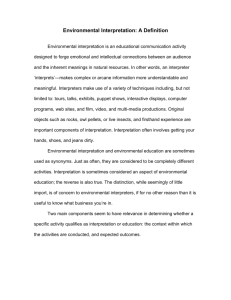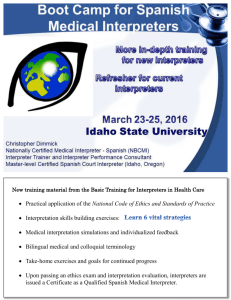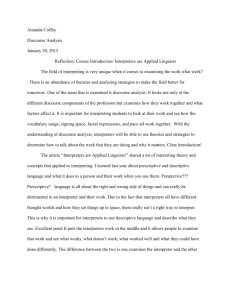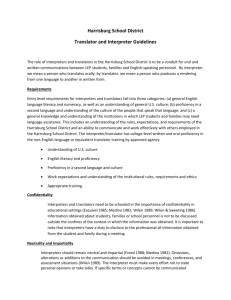TIPS FOR USING TRANSLATION
advertisement
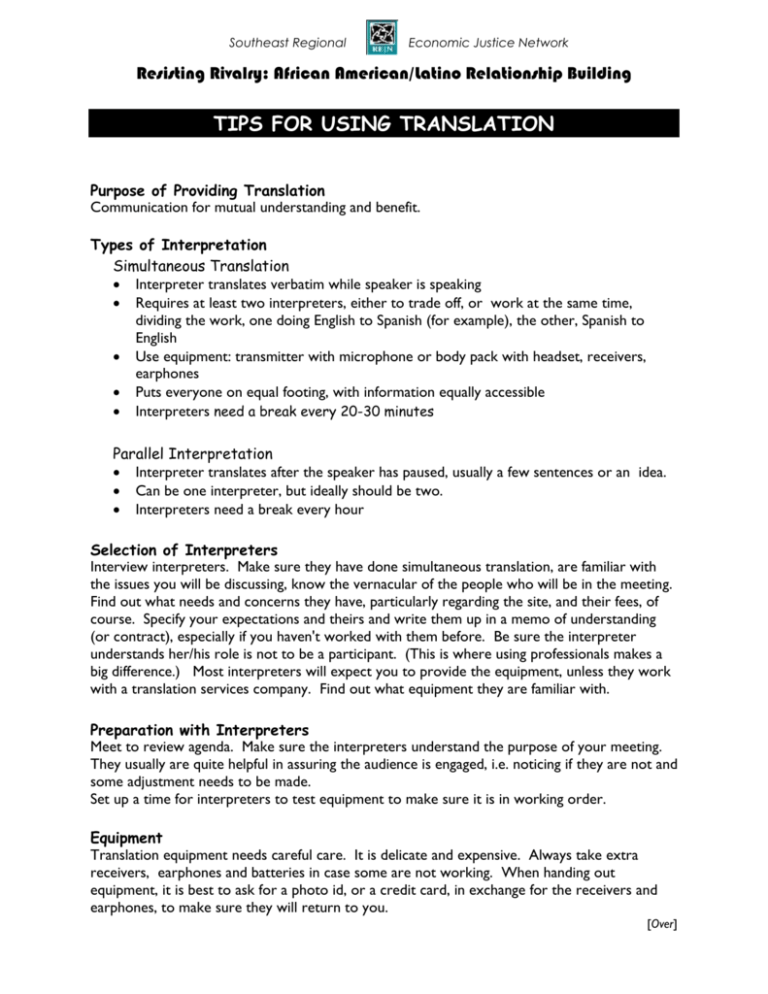
Southeast Regional Economic Justice Network Resisting Rivalry: African American/Latino Relationship Building TIPS FOR USING TRANSLATION Purpose of Providing Translation Communication for mutual understanding and benefit. Types of Interpretation Simultaneous Translation Interpreter translates verbatim while speaker is speaking Requires at least two interpreters, either to trade off, or work at the same time, dividing the work, one doing English to Spanish (for example), the other, Spanish to English Use equipment: transmitter with microphone or body pack with headset, receivers, earphones Puts everyone on equal footing, with information equally accessible Interpreters need a break every 20-30 minutes Parallel Interpretation Interpreter translates after the speaker has paused, usually a few sentences or an idea. Can be one interpreter, but ideally should be two. Interpreters need a break every hour Selection of Interpreters Interview interpreters. Make sure they have done simultaneous translation, are familiar with the issues you will be discussing, know the vernacular of the people who will be in the meeting. Find out what needs and concerns they have, particularly regarding the site, and their fees, of course. Specify your expectations and theirs and write them up in a memo of understanding (or contract), especially if you haven't worked with them before. Be sure the interpreter understands her/his role is not to be a participant. (This is where using professionals makes a big difference.) Most interpreters will expect you to provide the equipment, unless they work with a translation services company. Find out what equipment they are familiar with. Preparation with Interpreters Meet to review agenda. Make sure the interpreters understand the purpose of your meeting. They usually are quite helpful in assuring the audience is engaged, i.e. noticing if they are not and some adjustment needs to be made. Set up a time for interpreters to test equipment to make sure it is in working order. Equipment Translation equipment needs careful care. It is delicate and expensive. Always take extra receivers, earphones and batteries in case some are not working. When handing out equipment, it is best to ask for a photo id, or a credit card, in exchange for the receivers and earphones, to make sure they will return to you. [Over] Southeast Regional Economic Justice Network Resisting Rivalry: African American/Latino Relationship Building The Setting If interpreters are using body packs (portable transmitters) they will move around the room. Usually they stand near whomever is speaking. If a transmitter is being used with a mike, they will need a table and chairs. Sometimes (for large events) they prefer to be in booths. Speakers will have to talk into a microphone, so you may need a microphone that can be passed around, or mike stand(s) that people can go to when they wish to speak. When you arrange the seating of your room, place the interpreters at a place where the speaker can have eye contact with them. The Agenda Allow time on the agenda for people to get the translation equipment they need and for the interpreters to give instructions to the group. Ask for the group's patience and, if it's a long meeting, you might forewarn them that listening through earphones takes a lot of concentration. Both the audience and interpreters will need ample breaks. Most important, ask people to speak slowly and clearly. The facilitator and speakers should regularly make eye contact with the interpreters to make sure they are hearing and can keep up. If interpretation is taking place, remind the speaker to pause so that the interpreter can translate. Documentation If you plan to record the meeting, make sure you arrange to record all the English translation, so that whomever transcribes the event can write up complete notes. If you are scribing points on a flip chart, make sure you have two charts, one for each language.
